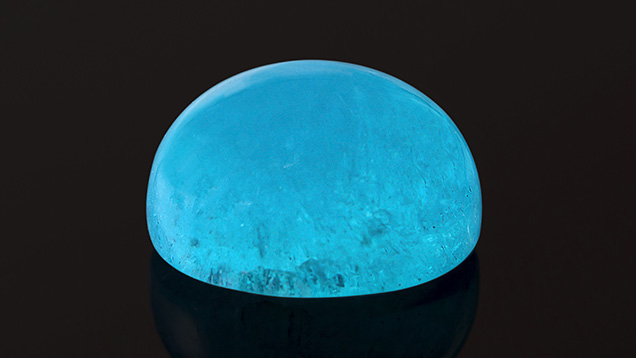Hemimorphite Resembling Paraíba Tourmaline

A 5.61 ct semitransparent blue cabochon (figure 1) was submitted to the New York laboratory for a Paraíba tourmaline origin report because of its electric blue color and its similar RI and internal features. Microscopic observation revealed parallel tubes, fluid inclusions, and white granular flake-like inclusions. The stone’s optic character could not be determined due to the cabochon shape and abundance of inclusions, and only an approximate RI of 1.61–1.63 with a birefringence of 0.02 could be obtained. Specific gravity was 3.45, which is inconsistent with tourmaline, and the fluorescence reaction was medium blue under short-wave and inert under long-wave UV radiation. We confirmed its identity by Raman spectroscopy, which showed a match with hemimorphite (https://rruff.info/Hemimorphite/R070536), as shown in figure 2.

Hemimorphite is a zinc silicate, Zn4Si2O7(OH)2·H2O; the purest form is white or colorless. Impurities cause different colors, such as copper (Cu2+) for a bluish and greenish tint, ferrous iron (Fe2+) for green, and ferric iron (Fe3+) for brown. Laser ablation–inductively coupled plasma–mass spectrometry (LA-ICP-MS) composition analysis revealed that this stone contained no iron but did contain copper, which produced the electric blue color.



